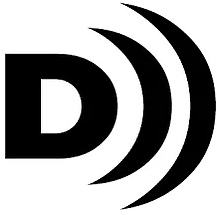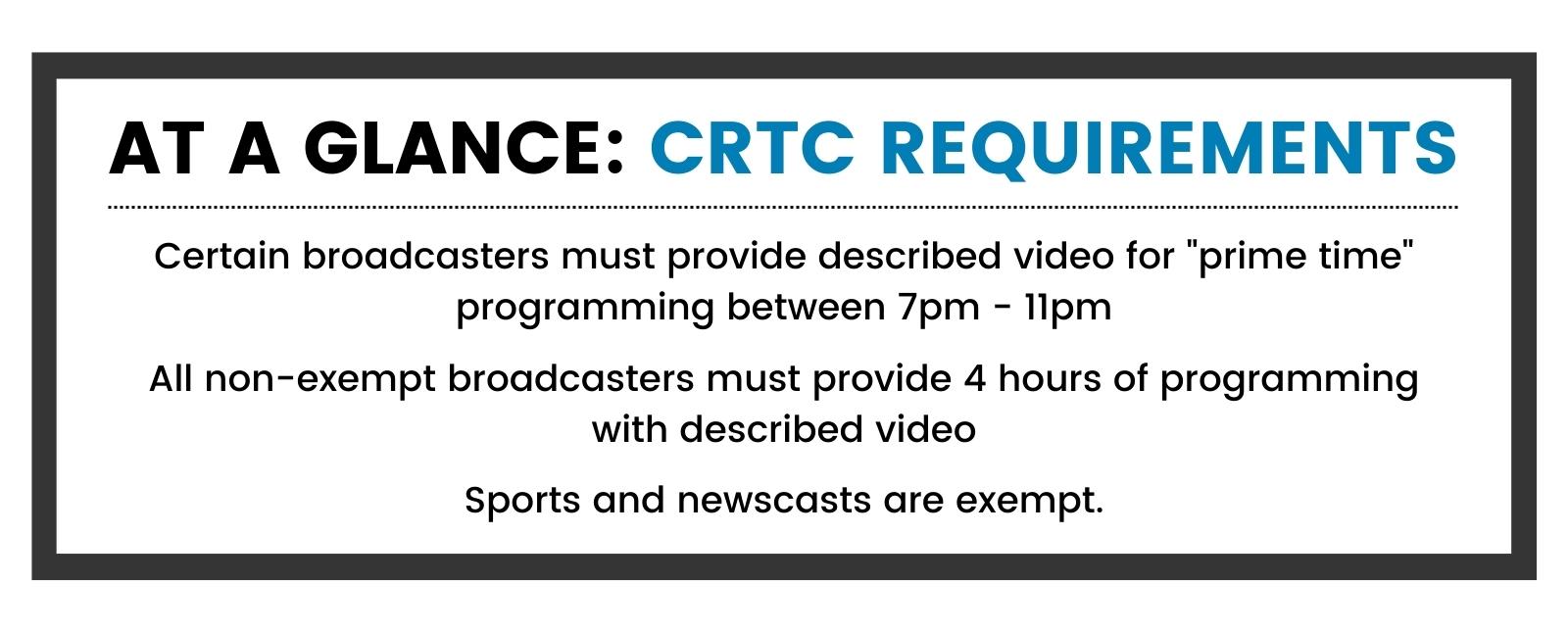Described Video Requirements for Canadian Broadcasters
Updated: July 12, 2024
Read this blog in French | Lire ce blog en français
How the AODA Impacts Online Accessibility [Free Ebook]
Many (if not most) broadcast programs in Canada lack described video and/or audio, which is an accommodation for blind and low-vision individuals. However, Canada’s “Let’s Talk TV” initiative aims to enhance the availability of described video that is provided by broadcasters.
With tiered requirements according to the size and resources available to broadcast organizations, the final phase of requirements became active in September of 2019. The Canadian Radio-television and Telecommunications Commission (CRTC) first began requiring minimum levels of described video content from particular broadcasters in 2001.
The CRTC’s most recent guidance enhances pre-existing requirements for described video and audio content, and also provides information on exempt programming and compatible accessible hardware for viewers. Keep reading to learn more about described video content and Canada’s most recently published requirements.
What is described video?
Described video is also referred to as audio description – no matter what you call it, the aim is always to describe the important visual elements of a video within the natural pauses of dialogue or audio. It was created as an accessibility accommodation for blind and low-vision users.
Described video helps paint a picture of what is going on in the program for someone who cannot actually ‘see’ the picture, and it’s often compared to the way a sports announcer narrates a baseball game on the radio.
Check out our favorite example of audio description in action, featuring everyone’s favorite Frozen snowman: Olaf!
Why is audio description important?
It’s important to make television accessible to all individuals – including those who are blind and low-vision – so that they can participate in the everyday medium of watching prime time television, with the same level of situational awareness and context as a sighted viewer.
Try to imagine the above scene from Frozen without audio description. The noises made by Olaf and the reindeer might be amusing, but a visually impaired viewers wouldn’t be able to follow the comedy of the struggle or how the characters relate to one another.
Canada’s Described Video Requirements
Certain Canadian broadcasters must now provide described content for relevant programming during prime time hours (7pm to 11pm), seven days a week.
Other non-exempt broadcasters are required to provide four hours of programming with description per week.
Newscasts and sports are exempt from these requirements.
Additionally, broadcasting distributors are required to make accessible hardware (like remote controls) available to their subscribers, provided they’re compatible with distribution systems. This requirement is a part of the broadcasting distribution undertaking (BDU) regulations.
Past CRTC Described Video Requirements
The CRTC initially began requiring video/audio description in 2001, with another policy in 2009 specifying:
- Broadcasters must provide audio description for all in-house productions related to information-based programs.
- Conventional broadcasters, including French and English, must offer four hours of described video weekly.
- All broadcasters must try to describe video before publishing online.
Canadian broadcasters were also asked to display the described video logo and make an announcement that audio description is available before the start of a program, as well as after each commercial break.
Getting started with audio description
While described video can be ordered after the production of a program, it’s best practice to continuously think about the description of a video throughout the production process – when it comes time to describe the video, you’ll already know what the important elements to focus on are.
Audio description can be created in-house or outsourced to professional description experts. When selecting an audio description vendor, you’ll need to take into account the cost, the vendor’s process, whether they will allow you to edit the descriptions, how to publish the descriptions, and (most importantly) the quality of the descriptions.
Intro to Audio Description: watch the free webinar 🎬
The CRTC’s requirements on described video content make up just one part of the Canadian accessibility landscape – learn more about Canadian accessibility standards from the Accessibility for Ontarians with Disabilities Act (AODA).
This blog post is written for educational/general information purposes only, and does not constitute specific legal advice – as such, this post should not be used as a substitute for competent legal advice from a licensed professional attorney in your state. This post was originally published on July 22, 2019 and has since been updated for accuracy, clarity, and freshness.
Further Reading

Subscribe to the Blog Digest
Sign up to receive our blog digest and other information on this topic. You can unsubscribe anytime.
By subscribing you agree to our privacy policy.








